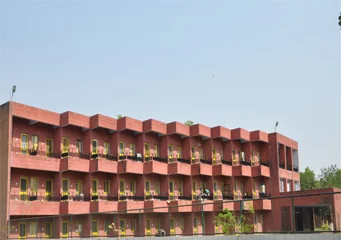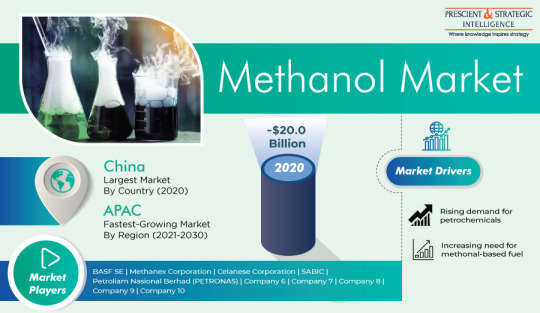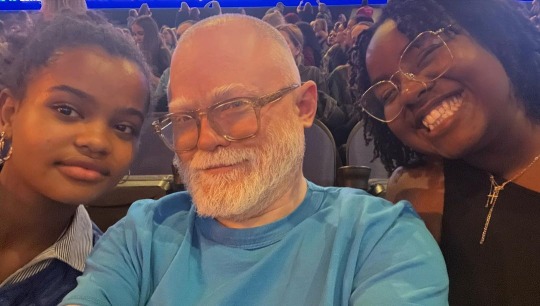#industry collaborations
Text
Deenbandhu Chhotu Ram University of Science and Technology placement
Deenbandhu Chhotu Ram University of Science and Technology
Deenbandhu Chhotu Ram University of Science & Technology, with its strong commitment to academic excellence, has established itself as a leading institution in the field of science and technology education. The university's comprehensive range of undergraduate and postgraduate programs offers students a wide array of options to pursue their academic interests and career goals. The state-of-the-art facilities at Deenbandhu Chhotu Ram University provide students with a conducive learning environment, equipped with modern laboratories, research centers, and libraries. The experienced and dedicated faculty members further enhance the learning experience by imparting practical knowledge and skills to the students, preparing them for the challenges of the professional world.
Web Site:- www.dcrusm.org.in
#Deenbandhu Chhotu Ram University of Science and Technology#Deenbandhu Chhotu Ram University of Science & Technology#placement#dcrusm#dcrustm#viral#deenbandhu chhotu ram university of science and technology (dcrust)#www.dcrusm.org.in#management#applied sciences#postgraduate programs#pharmacy#industry collaborations#undergraduate programs#dcrust#murthal#humanities#research and innovation
0 notes
Text

Deenbandhu Chhotu Ram University of Science & Technology, also known as DCRUST, is a renowned institution located in Murthal, Haryana, India. Established in 2006, the university has quickly gained recognition for its excellence in science and technology education. With a sprawling campus and state-of-the-art facilities, DCRUST offers a wide range of undergraduate and postgraduate courses in various fields of study. The university is known for its strong emphasis on research and innovation, fostering an environment where students can explore their intellectual curiosities and contribute to the advancement of knowledge in their respective fields.
Web Site:- www.dcrusm.org.in
#Applied Sciences#Management#Pharmacy#Humanities#Research and Innovation#Industry collaborations#Entrepreneurship#Community engagement#Social responsibility#Outreach programs#Community development initiatives#Awareness campaigns#Educational quality#Research output#Conducive learning environment#Skilled graduates#Technological and socio-economic growth
0 notes
Text
Global Methanol Market: Industry Analysis, Trends, and Growth Forecast
Methanol is a compound that is used as an alternative fuel. It is also known as wood alcohol. The properties of methanol are similar to the chemical and physical properties of ethanol. Methanol is produced by steam-reforming natural gas for producing synthesis gas. The addition of this gas into a reactor in the presence of a catalyst causes water vapor and methanol. Natural gas is preferred over…

View On WordPress
#applications#Automotive#chemical synthesis#chemicals#Competitive Landscape#Construction#emerging opportunities#fuel blending#growth forecast#industry analysis#industry collaborations#Key players#Market dynamics#market size#market trends#Methanol market#regional analysis#solvent#technological advancements#trends
0 notes
Text
.
#johnny from dma’s telling nme that the band will 'mainly be hiding away and writing' for 2024#but also that they 'have done a couple of collaborations' 👀#'there probably won’t be an actual dma’s release for 2024.. there will be.. we will release.. something'#he mentioned one specific artist they’ve worked with 'and a few other people as well'#i mean.. could be anyone but might be.. someone we know 👀#here’s hoping!#johnny took#dma’s#nme aus#dec 2023#industry pals#louis#lt collaborators#maybe?!#m#.#FITF tour 2024#australia#also for my fellow louis x dma’s shippers haha:#they’re playing a show in melbourne on jan 27th as part of the australian open celebrations#(it’s the AO finals weekend)#which is also the day before louis’ melbourne show#jan 28th#so louis might go to that show#unfortunately dma’s are playing a festival in adelaide the day of louis’ melbourne show :(#they might catch him in sydney tho :)
16 notes
·
View notes
Note
With the expansion of remote jobs, will there be any reason at all for studios to reallocate employees in the future?
There are (and always will be) some fully-remote studios that manage to make things work, but I don't really think it will become the norm across the industry. There's a lot to be said for in-person collaboration and the spontaneous iterative process that's much more difficult to happen in a digital-only environment.

There's also been some significant recent internal pushback against further full-time remote hiring at many studios I know of, including my own. There's been a lot of tech industry layoffs lately, which gives the management more leverage to require certain behaviors from the workers such as "return to office" and such. I know that my own studio has instituted two recent policies - a hiring freeze and a hard cap on the percentage of workers that may be full-time remote. Fully-remote devs like me get grandfathered in because the fully-remote status was already written into my contract when I signed, but most new hires won't get that same luxury.

If I had to predict the future, my guess would be that full time remote positions will be uncommon but not unheard of in the future. They will be more common than they were pre-pandemic, but I suspect fully remote positions will be more like H1B visa applications - typically reserved for senior roles that are more difficult to hire instead of a common status for a majority of the team.
[Join us on Discord] and/or [Support us on Patreon]
Got a burning question you want answered?
Short questions: Ask a Game Dev on Twitter
Long questions: Ask a Game Dev on Tumblr
Frequent Questions: The FAQ
14 notes
·
View notes
Text
what an incredibly odd interview. they did, like, 80% of the talking. I'm not sure if they were expecting me to like interject or say things in response or something? I don't think I got the job. idk. on the one hand just carrying on talking and not asking much more might be something you do if you already decided no early on and are just biding time. on the other hand idk why you'd spend so much time detailing things about the job to someone you've decided against rather than just ending earlier. I guess if you were kinda hoping to nudge them into saying something else? if so I definitely missed the hint.
they only actively asked, like, 3 standard questions (tell me about yourself, what languages have you worked with, and a project you are proud of). they spent probably like 15 minutes telling me about shit they do. occasionally they'd pause to be, like, "do you have any experience with that" mid-explaining, like they just remembered to check rather than, y'know, being in the business of interrogating me. which, like, I tried to answer with some details of things I've done with it but. yeah. there's only so much I can say about if I've used postgres.
and then we spoke about the assessment I'd submitted briefly; I think they were reasonably happy with it but were maybe expecting me to say more words? I dunno.
I was expecting more, idk, technical questions or something. for their software engineer interview, they made me go through how I'd process the data for a specific scenario, for instance.
struggling to tell what the hell to make of this, lmao. guess I just gotta wait and see. I definitely think I should have said more words, somewhere, somehow. but idk beyond that.
#tbf I was being interviewed by like nerds not businesspeople I think#I mean they started the company but like#their story is they were grad students doing industry collaboration projects#and the people kept wanting more like 'ok you gave us this solution can you refer us to a company who will work it with us'#and eventually they decided to make that company.#they write papers they're not HR ykwim#so it is entirely possible they had no strategy there they were just going off#but yeah I feel kind of like I made null impression#nothing specifically bad but like. nothing.#m#then again my current job I was asked literally a total of 2 questions#and I answered on of them actively badly#but my company is pretty desperate I think they probably already decided based on grades + assessment#hopefully this is also true of these guys...?
7 notes
·
View notes
Text
17 notes
·
View notes
Text
I mean I feel like the FACT of the validity of George’s frustration with the treatment of his songs in the Beatles is literally backed up by the numbers. The sheer amount of songs he had backed up for All Things Must Pass, the SUCCESS that record had, and the freaking tiny amount of songs he had present on any given Beatles album. If you don’t think it’s a tiny bit ridiculous then there’s a fundamental lack of respect for George as a musician and songwriter present that I just can’t stand with. At that point it has little to do with how you feel about John and Paul and everything to do with how you see George.
#there’s just so much disrespect and hate for him the second you step outside of the bubble you can curate of George fans#it’s kind of mind boggling the way people think of him#and that can be limited to these insane fandom people too becaus george is a WELL respected guitarist and musician#he’s in the rock and roll hall of fame on his own he had a massively successful solo career#he had so many friends and collaborators in the industry who are also well regarded and respect him#so why can’t he get it from a few Beatles fans on tumblr lol#op#george harrison#the beatles
23 notes
·
View notes
Text
Q&A: Claire Walsh on how J-PAL’s King Climate Action Initiative tackles the twin climate and poverty crises
New Post has been published on https://thedigitalinsider.com/qa-claire-walsh-on-how-j-pals-king-climate-action-initiative-tackles-the-twin-climate-and-poverty-crises/
Q&A: Claire Walsh on how J-PAL’s King Climate Action Initiative tackles the twin climate and poverty crises


The King Climate Action Initiative (K-CAI) is the flagship climate change program of the Abdul Latif Jameel Poverty Action Lab (J-PAL), which innovates, tests, and scales solutions at the nexus of climate change and poverty alleviation, together with policy partners worldwide.
Claire Walsh is the associate director of policy at J-PAL Global at MIT. She is also the project director of K-CAI. Here, Walsh talks about the work of K-CAI since its launch in 2020, and describes the ways its projects are making a difference. This is part of an ongoing series exploring how the MIT School of Humanities, Arts, and Social Sciences is addressing the climate crisis.
Q: According to the King Climate Action Initiative (K-CAI), any attempt to address poverty effectively must also simultaneously address climate change. Why is that?
A: Climate change will disproportionately harm people in poverty, particularly in low- and middle-income countries, because they tend to live in places that are more exposed to climate risk. These are nations in sub-Saharan Africa and South and Southeast Asia where low-income communities rely heavily on agriculture for their livelihoods, so extreme weather — heat, droughts, and flooding — can be devastating for people’s jobs and food security. In fact, the World Bank estimates that up to 130 million more people may be pushed into poverty by climate change by 2030.
This is unjust because these countries have historically emitted the least; their people didn’t cause the climate crisis. At the same time, they are trying to improve their economies and improve people’s welfare, so their energy demands are increasing, and they are emitting more. But they don’t have the same resources as wealthy nations for mitigation or adaptation, and many developing countries understandably don’t feel eager to put solving a problem they didn’t create at the top of their priority list. This makes finding paths forward to cutting emissions on a global scale politically challenging.
For these reasons, the problems of enhancing the well-being of people experiencing poverty, addressing inequality, and reducing pollution and greenhouse gases are inextricably linked.
Q: So how does K-CAI tackle this hybrid challenge?
A: Our initiative is pretty unique. We are a competitive, policy-based research and development fund that focuses on innovating, testing, and scaling solutions. We support researchers from MIT and other universities, and their collaborators, who are actually implementing programs, whether NGOs [nongovernmental organizations], government, or the private sector. We fund pilots of small-scale ideas in a real-world setting to determine if they hold promise, followed by larger randomized, controlled trials of promising solutions in climate change mitigation, adaptation, pollution reduction, and energy access. Our goal is to determine, through rigorous research, if these solutions are actually working — for example, in cutting emissions or protecting forests or helping vulnerable communities adapt to climate change. And finally, we offer path-to-scale grants which enable governments and NGOs to expand access to programs that have been tested and have strong evidence of impact.
We think this model is really powerful. Since we launched in 2020, we have built a portfolio of over 30 randomized evaluations and 13 scaling projects in more than 35 countries. And to date, these projects have informed the scale ups of evidence-based climate policies that have reached over 15 million people.
Q: It seems like K-CAI is advancing a kind of policy science, demanding proof of a program’s capacity to deliver results at each stage.
A: This is one of the factors that drew me to J-PAL back in 2012. I majored in anthropology and studied abroad in Uganda. From those experiences I became very passionate about pursuing a career focused on poverty reduction. To me, it is unfair that in a world full of so much wealth and so much opportunity there exists so much extreme poverty. I wanted to dedicate my career to that, but I’m also a very detail-oriented nerd who really cares about whether a program that claims to be doing something for people is accomplishing what it claims.
It’s been really rewarding to see demand from governments and NGOs for evidence-informed policymaking grow over my 12 years at J-PAL. This policy science approach holds exciting promise to help transform public policy and climate policy in the coming decades.
Q: Can you point to K-CAI-funded projects that meet this high bar and are now making a significant impact?
A: Several examples jump to mind. In the state of Gujarat, India, pollution regulators are trying to cut particulate matter air pollution, which is devastating to human health. The region is home to many major industries whose emissions negatively affect most of the state’s 70 million residents.
We partnered with state pollution regulators — kind of a regional EPA [Environmental Protection Agency] — to test an emissions trading scheme that is used widely in the U.S. and Europe but not in low- and middle-income countries. The government monitors pollution levels using technology installed at factories that sends data in real time, so the regulator knows exactly what their emissions look like. The regulator sets a cap on the overall level of pollution, allocates permits to pollute, and industries can trade emissions permits.
In 2019, researchers in the J-PAL network conducted the world’s first randomized, controlled trial of this emissions trading scheme and found that it cut pollution by 20 to 30 percent — a surprising reduction. It also reduced firms’ costs, on average, because the costs of compliance went down. The state government was eager to scale up the pilot, and in the past two years, two other cities, including Ahmedabad, the biggest city in the state, have adopted the concept.
We are also supporting a project in Niger, whose economy is hugely dependent on rain-fed agriculture but with climate change is experiencing rapid desertification. Researchers in the J-PAL network have been testing training farmers in a simple, inexpensive rainwater harvesting technique, where farmers dig a half-moon-shaped hole called a demi-lune right before the rainy season. This demi-lune feeds crops that are grown directly on top of it, and helps return land that resembled flat desert to arable production.
Researchers found that training farmers in this simple technology increased adoption from 4 percent to 94 percent and that demi-lunes increased agricultural output and revenue for farmers from the first year. K-CAI is funding a path-to-scale grant so local implementers can teach this technique to over 8,000 farmers and build a more cost-effective program model. If this takes hold, the team will work with local partners to scale the training to other relevant regions of the country and potentially other countries in the Sahel.
One final example that we are really proud of, because we first funded it as a pilot and now it’s in the path to scale phase: We supported a team of researchers working with partners in Bangladesh trying to reduce carbon emissions and other pollution from brick manufacturing, an industry that generates 17 percent of the country’s carbon emissions. The scale of manufacturing is so great that at some times of year, Dhaka (the capital of Bangladesh) looks like Mordor.
Workers form these bricks and stack hundreds of thousands of them, which they then fire by burning coal. A team of local researchers and collaborators from our J-PAL network found that you can reduce the amount of coal needed for the kilns by making some low-cost changes to the manufacturing process, including stacking the bricks in a way that increases airflow in the kiln and feeding the coal fires more frequently in smaller rather than larger batches.
In the randomized, controlled trial K-CAI supported, researchers found that this cut carbon and pollution emissions significantly, and now the government has invited the team to train 1,000 brick manufacturers in Dhaka in these techniques.
Q: These are all fascinating and powerful instances of implementing ideas that address a range of problems in different parts of the world. But can K-CAI go big enough and fast enough to take a real bite out of the twin poverty and climate crisis?
A: We’re not trying to find silver bullets. We are trying to build a large playbook of real solutions that work to solve specific problems in specific contexts. As you build those up in the hundreds, you have a deep bench of effective approaches to solve problems that can add up in a meaningful way. And because J-PAL works with governments and NGOs that have the capacity to take the research into action, since 2003, over 600 million people around the world have been reached by policies and programs that are informed by evidence that J-PAL-affiliated researchers produced. While global challenges seem daunting, J-PAL has shown that in 20 years we can achieve a great deal, and there is huge potential for future impact.
But unfortunately, globally, there is an underinvestment in policy innovation to combat climate change that may generate quicker, lower-cost returns at a large scale — especially in policies that determine which technologies get adopted or commercialized. For example, a lot of the huge fall in prices of renewable energy was enabled by early European government investments in solar and wind, and then continuing support for innovation in renewable energy.
That’s why I think social sciences have so much to offer in the fight against climate change and poverty; we are working where technology meets policy and where technology meets real people, which often determines their success or failure. The world should be investing in policy, economic, and social innovation just as much as it is investing in technological innovation.
Q: Do you need to be an optimist in your job?
A: I am half-optimist, half-pragmatist. I have no control over the climate change outcome for the world. And regardless of whether we can successfully avoid most of the potential damages of climate change, when I look back, I’m going to ask myself, “Did I fight or not?” The only choice I have is whether or not I fought, and I want to be a fighter.
#000#Abdul Latif Jameel Poverty Action Lab (J-PAL)#Africa#agriculture#air#air pollution#Anthropology#approach#Arts#Asia#biggest city#carbon#carbon emissions#career#challenge#change#cities#Cleaner industry#climate#climate change#climate crisis#coal#Collaboration#compliance#crops#cutting#data#deal#Developing countries#development
2 notes
·
View notes
Text

Deenbandhu Chhotu Ram University of Science & Technology is committed to providing students with a holistic learning experience. Beyond the classroom, the university offers a vibrant campus life with a wide range of extracurricular activities and student organizations. This encourages students to develop their talents and skills outside of academics, fostering a well-rounded and balanced education. The university also has strong industry connections, providing students with opportunities for internships, industrial visits, and placements, ensuring that they are well-prepared for the professional world.
Web Site:- www.dcrusm.org.in
#industry collaborations#postgraduate programs#pharmacy#undergraduate programs#dcrust#research and innovation#management#humanities#applied sciences#murthal
0 notes
Text
DCRUST Sonepat Courses & Fees 2023
Deenbandhu Chhotu Ram University of Science & Technology is a renowned institution located in the state of Haryana, India. Known for its excellence in the field of science and technology, the university has a rich history and impressive academic achievements. The university offers a wide range of undergraduate and postgraduate programs, ensuring that students have diverse options to choose from. With state-of-the-art facilities, experienced faculty, and a focus on practical learning, Deenbandhu Chhotu Ram University of Science & Technology provides students with an ideal environment to enhance their knowledge and skills.
Web Site:- www.dcrusm.org.in
#Applied Sciences#Management#Pharmacy#Humanities#Research and Innovation#Industry collaborations#Entrepreneurship#Community engagement#Social responsibility#Outreach programs#Community development initiatives#Awareness campaigns#Educational quality#Research output#Conducive learning environment#Skilled graduates#Technological and socio-economic growth
0 notes
Text
Unveiling the Best SEO Worker in Bangladesh: Driving Digital Success
#https://dev-seo-worker-in-bangladesh.pantheonsite.io/home/: With years of experience and a deep understanding of search engine algorithms#[Insert Name] possesses unparalleled expertise in SEO strategies and techniques. They stay abreast of the latest trends and updates in the#ensuring that clients benefit from cutting-edge optimization practices.#Customized Solutions: Recognizing that each business is unique#[Insert Name] tailors their SEO strategies to suit the specific needs and goals of every client. Whether it's improving website rankings#enhancing user experience#or boosting conversion rates#they craft personalized solutions that yield tangible results.#Data-Driven Approach: [Insert Name] firmly believes in the power of data to drive informed decision-making. They meticulously analyze websi#keyword performance#and competitor insights to devise data-driven SEO strategies that deliver maximum impact.#Transparent Communication: Clear and transparent communication lies at the heart of [Insert Name]'s approach to client collaboration. From#they maintain open lines of communication#ensuring that clients are always kept informed and empowered.#Proven Results: The success stories speak for themselves. Time and again#[Insert Name] has helped businesses across diverse industries achieve unprecedented growth in online visibility#organic traffic#and revenue generation. Their impressive portfolio of satisfied clients serves as a testament to their prowess as the best SEO worker in Ba#Continuous Improvement: In the dynamic landscape of SEO#adaptation is key to staying ahead. [Insert Name] is committed to continuous learning and refinement#constantly refining their skills and strategies to stay at the forefront of industry best practices.#In conclusion#[Insert Name] stands as a shining beacon of excellence in the realm of SEO in Bangladesh. Their unw
2 notes
·
View notes
Text





Felix Howard, Director of A&R at BMG UK, at Louis’ show at The O2 London 17/11/23
#so many bmg people there#and other industry peeps#louis#fitf tour#O2 arena#london#17.11.23#felix howard#bmg#david sneddon#tobie tripp#lt collaborators#industry pals#photo set#video#flashing#m
18 notes
·
View notes
Text
working on this stupid fucking book chapter and im about to blow myself up rn. at least it will be over today (somehow LOL) but i am so deeply miserable rn
#purrs#girls who are deeply mentally ill in ways that negatively impact their experience at work and yet are about to become published co-authors🥰#literally i want to explode rn. collaborative writing processes that make you relive the horrors and push buttons you didn’t know you had ♥️#but also everything that has happened at work for literal years has made me want to explode. but i cannot say anything about it or i will#ruin everything. i will retreat to an island iwill dabble in the vacation hut industry i will skulk about the private libraries and public p#parks i will fold the clean clothes i will wash the dishes i will never again dream of having the whole world - mindy nettifee <3
11 notes
·
View notes
Text
#Kyrie Irving ANTA deal#Basketball footwear partnership#Game-changing collaboration#KrazyKicks blog#Sneaker industry news#Sneaker collaborations#Sports footwear innovation#Athlete endorsements#Sneaker enthusiasts#Future of basketball shoes
2 notes
·
View notes
Text

Law Industries Invitation
We have some amazing customers with a wealth of knowledge. We wanted to throw open the doors to invite all of you to share some or all of your fantastic knowledge with others. We will publish it here on our social to share with others and build an amazing wealth of knowledge and resources.
No matter if krav maga is your particular talent, lock picking, a computer talent or even how to hide online. It's a skill and we would like to share it with the community.
Submit your text by email to [email protected] and attach any pics that accompany it. You can submit it anonymously or we can add a name and link to your media account.
Everyone has knowledge and skills. Let's build an incredible community together.
Dont forget to Like, Repost and Follow Us
Global Shipping Available
https://store.lawindustries.co.uk/
#lawindustries #tacticaltinkerbell #ubiangelitimere
#Lawindustries#Tacticaltinkerbell#Collaboration#Invite#Community#gearblr#tactical#military#edc#sere#survival#e&e#gtfo#law industries#tactical tinkerbell
5 notes
·
View notes